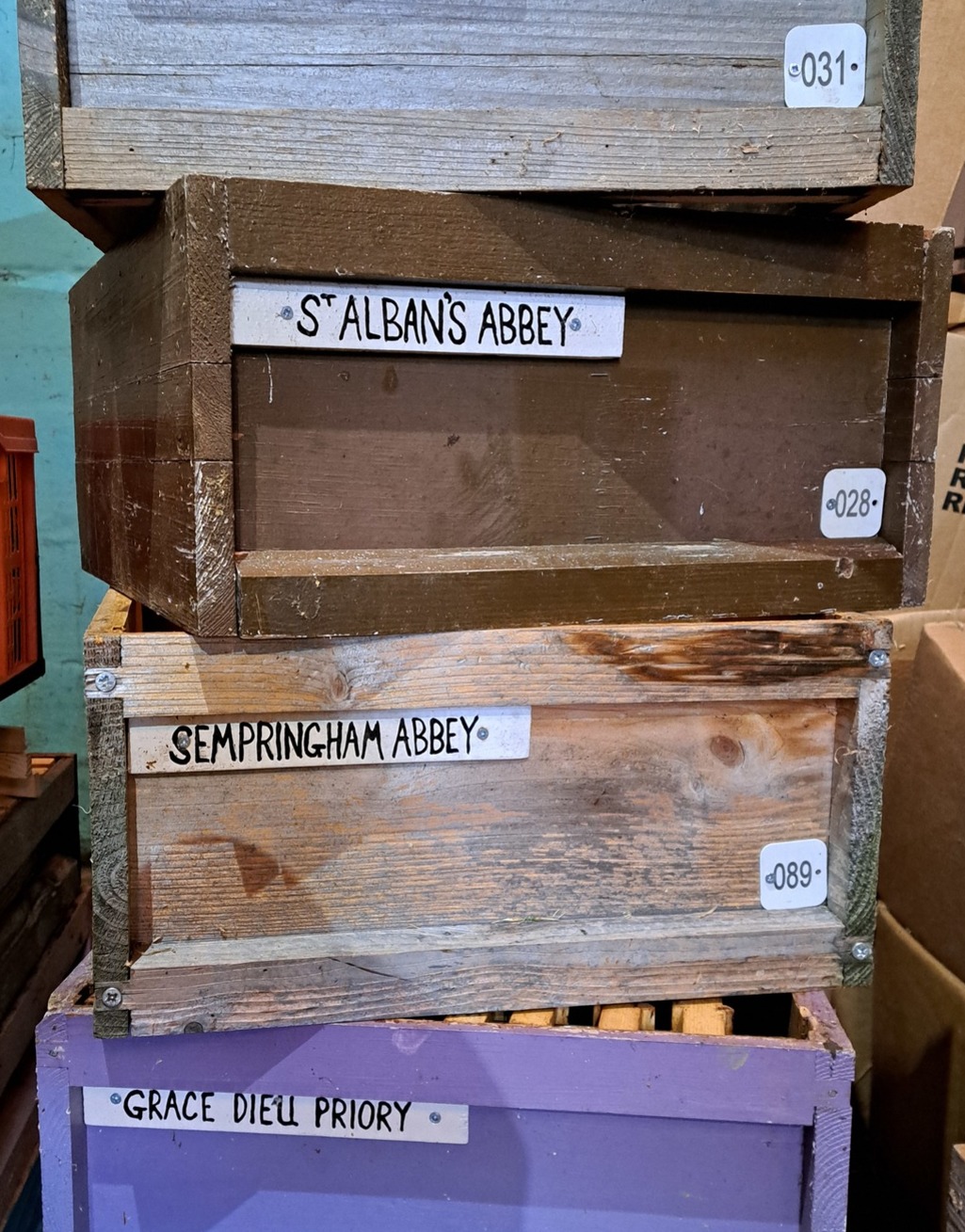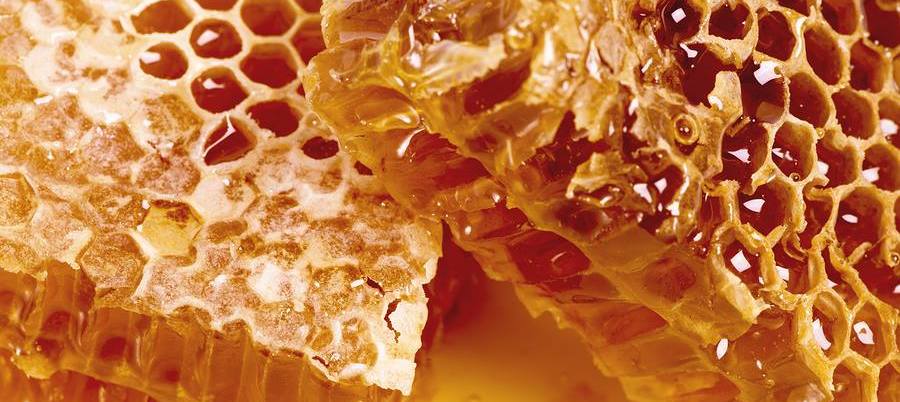Hive Names
Posted on 21st February 2024 at 20:04
At first glace a bee hive is a bee hive but my bee hives have a history and a story to tell.
It is that time of year for maintenance and refurbishment. In the UK bee hives spend their lives outside dealing with all the elements of the English weather. Everything from solid rain, as we have been suffering since the July 2023, snow, strong wind and hot sunshine.
My hives are made from one of two timbers. The older hives are made from Pitch Pine and the newer ones are made from Western Cedar.
All my hives are British Standard (BS )National Hives. That was not always the case as we shall see.

The reason my hives is part of my Bee Farming history. In 2013 I was made redundant from a job as an account manager for a software firm. I was 50 years old and had to decided what to do with my remaining year, oh.!........and that small matter of needing to earn a living. I had been keeping bees as a hobby for twenty old years at that stage and I had quite some time knowing that redundancy was coming. So with a couple of helpful coincidences and support from the now famous Mrs Bee Farmer. We decided to put the redundancy money into a new venture.................Bee Farming.

In the long lead up to the start date of The Bee Farmer I joined the Bee Farmers Association. In those days they had a membership called associate. This was designed for folk, like myself, wishing to come into the industry but did not meet the minimum criteria. However they were working on coming up to standard. The Bee Farmer Association had just created the membership category as they had instigated a membership drive. The average age of Bee farmers was very high and even though many younger people have come into the association the average age is still 60+.
It was through the association I met the other few bee farmers operating near me in the North West Leicestershire/South Derbyshire borders.


Brother David was one such chap. Brother David was a monk at Mount Saint Bernard Abbey. They are a Cistercian Order. Brother David ran a little over 100 hives, the honey supplying the community and the shop.
Brother David had a somewhat unique approach to the format of his hives. They were a BS National format in plan but in the 14 x 12 style. They are half as deep again as my BS National hives. The unique element was that he placed a super under the 14 x 12 brood box. This made it the same a two of my brood boxes on top of each other but he only had the standard number of frames which is eleven. This made the frames very long and difficult to handle and the honeycomb was apt to break off.
Brother David decided the life at Mount Saint Bernard Abbey was not sufficiently austere so he tried a monastery in France and the USA. The USA was more to his liking so he decided to move. That is when the opportunity to buy some of his colonies came up.
A deal was stuck with the Abbot and I took on fifty hives and got loads of additional kit including brood box (where the bee live) and a stack of supers (where the honey is made), a warming cabinet and a trailer. I started by removing all the supers from under the brood box to take them back to 14 x 12 which I found more manageable. Brother David was a slightly built fellow but he must have been much stronger than he looked. Those hives were very heavy. This winter I have had a big push to convert all the 14 x 12s to BS Nationals. Each winter I have converted a few hives.
Its not a a complicated process. It takes about 20 minutes per box. First take off the bottom rail on both sides. This is usually nailed in or has a dowel on the ends and nailed through from the inside of the box. Then the hive is run through my table saw. I bought the table saw just for this job. It has made the job almost a pleasure to do. The fence is set just so to trim off just the right amount of the 14 x 12 box to leave me with a BS National box. I use glue and screws to re-fix the bottom rail to the box. I clean up the inside of the box with a blow torch to kill any pathogens. Finally I add the name plate and number.
Brother David made dozens of name plates of the monastic houses in England. Some even have the coat of arms of those monastic houses. They are all hand painted. The numbers are of my doing. As you see they are shop bought.
The name identifies the box. The number identifies the queen within the box. The Bee Inspectorate expects a beekeeper to be able the identify the colony. Often beekeepers do not make the distinction between the box and the bees. I try, try being the operative word, to track my queens as I selectively breed from the Queens with my preferred traits....mainly easy to handle, placid. They are nice for my newly trained beekeepers to get started with.

When I look at my hives and can tell their history. The brood boxes and supers that came from Brother David have thick paint with distinctive muted colours. These are the colours of woodwork inside of the Monastery. Brother David was a chap after my own heart. Any part pot of paint is suitable to paint the boxes.
The painted hives are those that have come through my School for Bees program. The children paint the hives:
A. to waterproof them and
B. So the bees know which hive is theirs.
The picture is of the hives at Broomleys School in Coalville. Its not the children's work but that of a teachers who was a graphic designer before becoming a teacher.
Then there are mine. They then to be slate grey. Cedar is high in oils and is naturally repellent to insects. As it ages Cedar turns a muted silvery grey

So a hive is not just a place for honeybees to live in. It also represents a history of the beekeeper.
Tagged as: Misc, School for Bees
Share this post:








